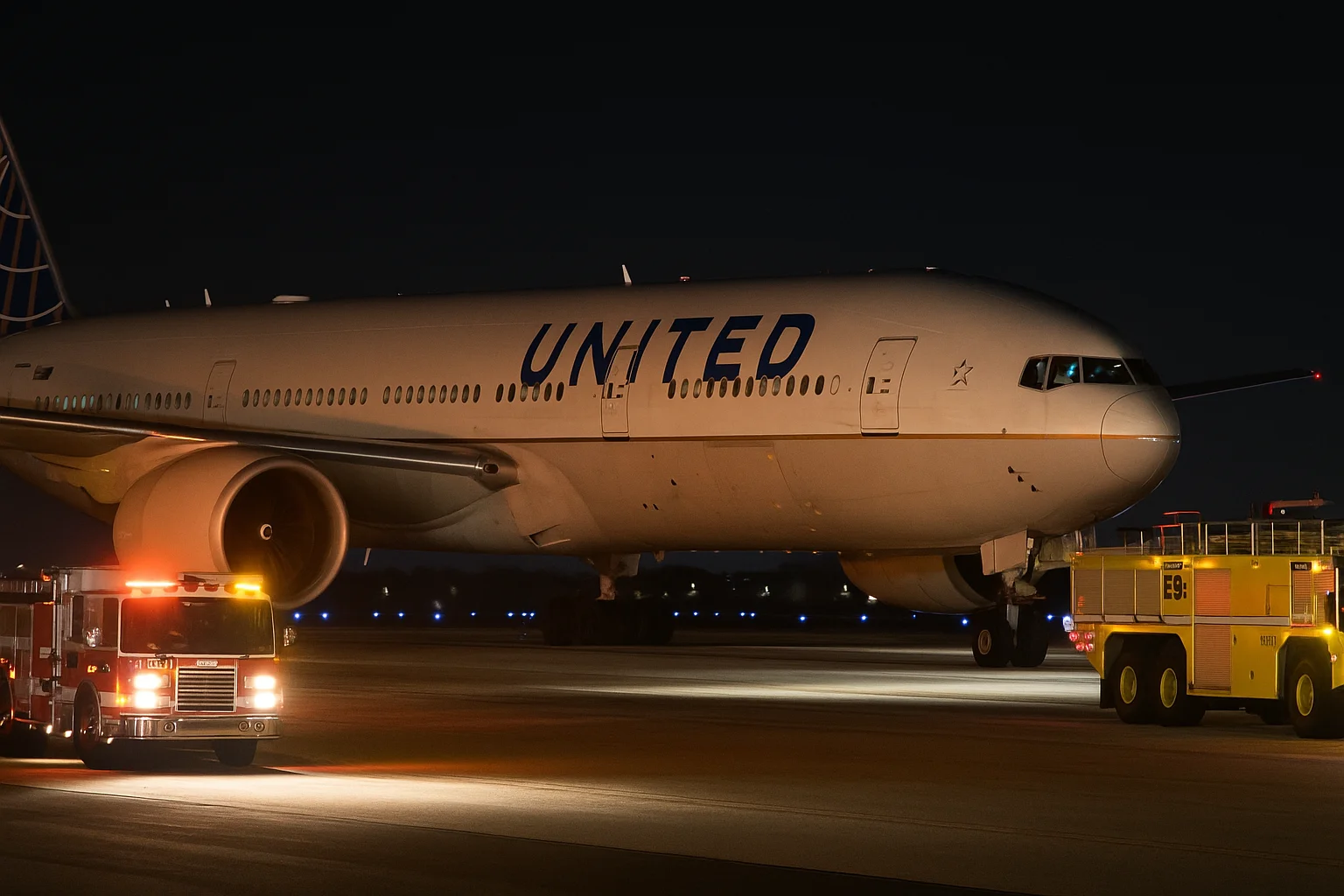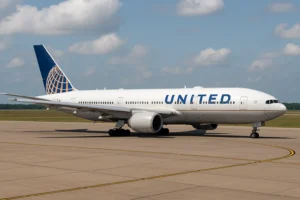Introduction: When Routine Travel Turns into Global News
Air travel remains one of the safest ways to cross continents, with millions of passengers boarding planes daily. Yet, moments like the United Airlines Flight UA770 Emergency Diversion remind us why aviation demands constant vigilance. What began as a routine flight quickly escalated into a mid-air scare that drew international attention.
Passengers boarded UA770 expecting an uneventful journey, but a sudden issue forced the pilots to change course, activate emergency procedures, and divert the aircraft. While everyone landed safely, the incident sparked questions about aviation preparedness, modern safety systems, and what passengers experience when the unexpected happens at 35,000 feet.
This comprehensive report explores what happened on UA770, how the airline responded, passenger reactions, industry implications, and key takeaways for travelers.
What Happened on United Airlines Flight UA770?
A Calm Start Before the Scare
United Airlines Flight UA770, operated on a Boeing wide-body jet, took off on schedule. As passengers settled in with meals, books, and in-flight entertainment, nothing hinted at trouble.
Midway through the flight, however, the aircraft experienced what reports described as a “technical irregularity.” The captain immediately coordinated with air traffic control and announced the need for a UA770 diverted landing. While the communication was calm and professional, passengers understood the seriousness.
See also Delta Flight DL275 Diverted LAX – The Complete Story of the Diversion
The Diversion Sequence
- Pilots declared a precautionary diversion.
- Air traffic control cleared UA770 toward Chicago.
- Emergency services—including fire crews and paramedics—stood ready at the runway.
- Within minutes, the aircraft touched down safely.
Passengers described the landing as tense but smooth. The safe outcome showed why aviation safety systems are designed with multiple layers of protection.
Passenger Reactions During the Diversion
For travelers on board, this wasn’t just protocol—it was an emotional journey.
- Some whispered silent prayers, exchanging anxious glances with fellow passengers.
- Others clutched phones, quietly sending messages to loved ones.
- Flight attendants calmly reassured passengers, walking the aisles with professionalism.
One passenger later shared: “Every announcement from the cockpit felt like a lifeline. Time moved in slow motion.”
When UA770 touched down, the cabin erupted in tears, hugs, and sighs of relief. The experience highlighted not just fear but also resilience and gratitude for the crew’s quick thinking.
United Airlines’ Response and Professionalism
Ground Operations in Action
As soon as the plane landed, United Airlines activated its crisis response playbook. Ground staff escorted passengers safely, medical teams stood by, and operations teams began rebooking connections.
Support for Passengers
United Airlines offered:
- Meal vouchers and refreshments.
- Alternative flights and rebooking options.
- Customer service representatives at hand for assistance.
The airline later issued a statement praising the crew’s professionalism and reaffirming its commitment to passenger safety. This fast, coordinated response reassured travelers and minimized disruption.
Why Do Emergency Diversions Happen?
Emergency diversions, like the United Airlines emergency involving UA770, are not rare in aviation. They often occur as precautionary measures in situations such as:
- Medical Emergencies – A passenger’s sudden health issue.
- Mechanical Irregularities – Warning systems or engine sensors triggering alerts.
- Weather Factors – Severe turbulence, lightning, or storms.
- Security Threats – Though rare, always handled with maximum caution.
Aviation experts stress that diversions are not failures—they are proof that safety protocols function exactly as intended.
How Airlines Handle Emergency Diversions
When an aircraft diverts, a chain of coordination unfolds:
- Pilot-Air Traffic Collaboration – The captain works with controllers to secure the fastest safe route.
- Emergency Services Activation – Ground fire, rescue, and medical teams prepare before the plane lands.
- Passenger Care – Airlines arrange rebooking, accommodations, and travel support.
- Aircraft Inspection – Engineers immediately assess the plane before future flights.
The United Airlines Flight UA770 Emergency Diversion today showcased how seamlessly these systems operate under pressure.
The Role of Technology: Tracking UA770 in Real Time
In today’s digital age, incidents like UA770 are visible globally within minutes. Families and aviation enthusiasts monitored the diversion using live apps such as:
- Google Flights
- FlightAware
- UA770 (UAL770) United Flight Tracking and History tools
These platforms provided live maps, diversion alerts, and estimated arrival times, helping to calm anxieties for families awaiting news. On social media, hashtags like #UA770 and United Airlines emergency trended, amplifying real-time coverage.
Broader Impact on Aviation and Travelers
The UA770 event also created ripple effects across the industry:
- Air Traffic Delays – Other flights were rescheduled as controllers prioritized the emergency.
- Training Emphasis – Airlines reinforced crew preparedness through simulation drills.
- Maintenance Checks – Additional technical inspections were conducted fleetwide.
- Passenger Trust – Transparency and professionalism restored traveler confidence.
Such incidents—even with safe outcomes—remind regulators, airlines, and passengers why aviation demands constant investment in safety and preparedness.
Lessons for Travelers
The United Airlines Flight UA770 Emergency Diversion status carries practical lessons for every flyer:
- Pay attention to safety briefings. They exist for real-world scenarios.
- Trust the crew. Flight attendants and pilots are trained for emergencies.
- Travel insured. Coverage helps when delays or rebookings occur.
- Stay calm and follow instructions. Panic never helps in critical moments.
- Use flight-tracking apps. Tools like FlightAware or Google Flights keep loved ones informed.
Other United Airlines Flights and Related Incidents
Aviation followers often track not only UA770 but other routes such as UA 769, UA 673, and even vuelo UA 770 updates in Spanish-language aviation communities.
These flights demonstrate how global airline operations are monitored across languages, regions, and platforms—ensuring passengers everywhere stay informed about safety and status.
Frequently Asked Questions (FAQs)
Q1. What caused the United Airlines Flight UA770 emergency diversion today?
The exact cause remains under review, but reports point to a technical irregularity requiring precautionary action.
Q2. How can I track UA770 diverted flights in real time?
Use apps like Google Flights, FlightAware, or search “UA770 (UAL770) United Flight Tracking and History” for live updates.
Q3. Was anyone injured during the diversion?
No injuries were reported; the diversion was purely precautionary.
Q4. Do other United flights face diversions?
Yes, diversions are standard in aviation—examples include UA 769 and UA 673, where weather or technical checks required rerouting.
Q5. Are diversions dangerous?
Not usually. Diversions highlight how aviation systems prioritize passenger safety above schedules.
Conclusion: Safety First in the Skies
The United Airlines Flight UA770 Emergency Diversion was a reminder of aviation’s resilience. From the calm actions of the pilots and crew to the swift support from United Airlines and emergency teams on the ground, every safeguard worked as designed.
For passengers, the experience was emotional but ended with gratitude and trust in modern aviation. For the industry, it reinforced the importance of training, communication, and preparedness.
At its core, UA770’s story is not about disruption—it is about professionalism, resilience, and the unwavering priority of protecting human life.



